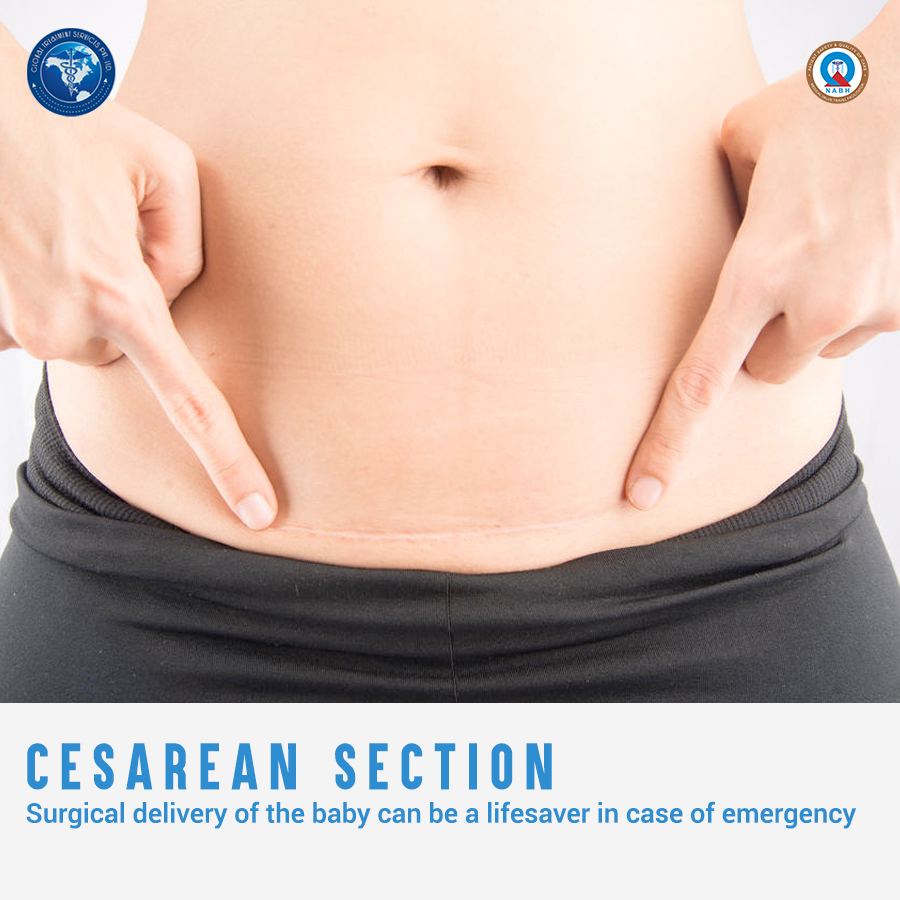When it comes to delivery,cesarean section is often frowned upon.People shaming c-section says it is not ‘real birth’.They argue that it is an easy way out and you did not experience pain and the baby did not come out of you and on and on.Alas,vaginal birth is not the only thing a mother does for her baby.If C-section babies are not really born,they would still be in their ‘trimesters’!!Let us see the details of c-section mode of delivery here to accept and appreciate it.
What is c-section
Cesarean section delivery is the surgical delivery of the baby by making incisions in the abdomen and uterus of the mother.Emergency c-section is performed when the labour has already begun but complications crop up.Health care team decides immediately that it is the safest option.Emergency c-section can be life saving for both mother and the baby.
When the mode of delivery is already chosen to be c-section before one goes into labour,then it is called planned or elective c-section.In most cases, c-sections are done for the safety of the child.Vaginal delivery poses danger when baby is lying in difficult position for labour or there are problems with the placenta such as a low lying placenta.
Reasons for planned Cesarean Section
There are several reasons why cesarean sections may be planned prior to the labour or at the beginning of labour. As mentioned earlier,most of the reasons attribute to the safety of the baby and/or the mother.
Placenta Previa
This is where the placenta is near of covering the cervix. This blocks the pathway for a vaginal birth or would present a bleeding risk during labor.
Certain Fetal Positions
Your baby’s position in the uterus may mean that a vaginal birth is not possible, nor safe for them to be born. This can include: Transverse Lie, some breech positions, etc.
Higher Order Multiples
With every baby that you have in the uterus the risk of a cesarean birth increases. While there are births of twins and triplets vaginally, the more babies, the less likely a vaginal birth will be possible. This is many times due to odd positions in the uterus.
Genital herpes
If you have herpes occurring late in pregnancy and you have an active lesion on your genitals, you may be encouraged to have a cesarean rather than delivery vaginally. This is to prevent transmission to your baby.
Pre-eclampsia
You have pregnancy-related high blood pressure
Certain Fetal Conditions
Your baby isn’t getting enough oxygen and nutrients – sometimes this may mean the baby needs to be delivered immediately
Other conditions
Your labour isn’t progressing or there’s excessive vaginal bleeding,diseases that may make vaginal birth difficult like pulmonary or coronary disease of the mother,HIV positive with a high viral load at time of birth.Previous invasive uterine surgery, including a previous classical cesarean incision
Some mothers may choose planned c-section if they feel they cant cope with the pain involved in a vaginal birth especially if they had had a difficult vaginal delivery with their last baby.Also for some mothers,it may have caused severe postpartum depression.You never know what she goes through physically and emotionally.So ,there is no reason in shaming mothers going ahead with elective c-section.
C section Sugery
Most caesareans are carried out under spinal or epidural anaesthetic. Both types of anaesthetic are given as an injection in your spine that numbs the lower part of your body. This mean you’ll be awake.You will either lie on your side or sit leaning forward, curving your back, while the anaesthetist inserts a very fine needle into your spine.Occasionally a general anaesthetic, where you’re asleep, may be used, particularly if the baby needs to be delivered more quickly.This means you will be asleep for the operation
Before the procedure:You will be given
- fluids through a needle in your arm (a drip), to stop you getting dehydrated and to reduce the risk of low blood pressure during the operation
- anti-sickness medicine to stop you feeling or being sick
- a small tube (catheter) into your bladder to drain urine – this will stay in place for at least 12 hours and until you feel able to walk to the toilet.
During the procedure:
- a screen is placed across your body so that what’s being done is not seen.
- a cut about 10-20cm long will usually be made across your lower tummy and womb so your baby can be delivered.you may feel some tugging and pulling during the procedure
- Baby is then lifted out.
The whole operation normally takes about 40-50 minutes.
After the procedure:
- regular checks to make sure the anaesthetic is wearing off , your breathing, heart rate, blood pressure, wound dressing and pain relief for the first few hours
- regular checks on the amount of vaginal bleeding
- a catheter to drain urine from your bladder
- compression stockings to reduce your risk of blood clots
- a needle in your arm (drip) to give you fluids until you’re eating and drinking again
Recovery
C section is a major surgery meaning it risks associated with it like any other surgery.Moms are at greater risk during c section than vaginal birth.Recovery takes more time than normal delivery. Most women experience some discomfort for the first few days after a caesarean, and for some women the pain can last several weeks.The wound in your tummy will eventually form a scar.Regular pain killers are advised to control pain and bleeding.Once the anaesthetic has worn off, you’ll be able to stand up and do short walks.It’s important to move around soon after your c-section to reduce the risk of blood clot.
Benefits far outweigh any disadvanatges.No reasons for shaming mothers!
For any queries regarding treatment facilities,email us at query@gtsmeditour.com

Post a comment